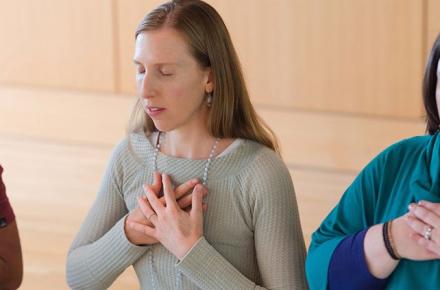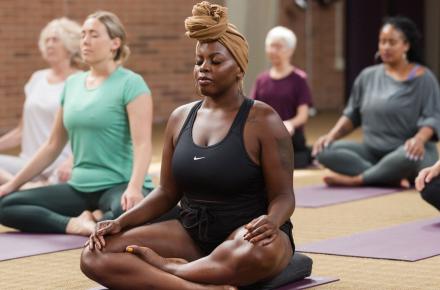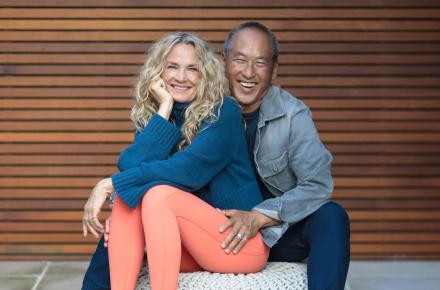Remembering B. K. S. Iyengar, a Man Who Was Once the “Anti-Advertisement for Yoga”
Fierce. Kind. Creative. Iconic. These are some of the words used to describe B. K. S. Iyengar, who until his passing on August 20, 2014, in Pune, India, was regarded to be one of the greatest living yoga masters.
Why? Because back in the 1950s—long before 20 million Americans were practicing yoga and scientists were studying it and doctors were prescribing it and studios were as ubiquitous as Starbucks—Iyengar was one of the first Indian masters who brought yoga to the West.
But it wasn’t easy.
At the time, Westerners had little interest in yoga, and racism was rampant. Before giving a lecture in Switzerland, Iyengar had to promise not to eat glass, throw fire, or endanger the audience; in Britain, he was barred from a hotel’s breakfast hall because he was Indian; and when his plane landed in New York City in 1956 he had to exit last, because he was the only “colored” man on board.
Yet the leonine yogi wasn’t deterred. His mission was “to propagate yoga.” At times, he was so poor that he could afford only rice and water. But this wasn’t the first time he had overcome adversity.
How a Sickly Teen Became a Yoga Master
Born in Bellur, Karnataka, in 1918 during a worldwide flu epidemic, the self-described “anti-advertisement for yoga” suffered from tuberculosis, typhoid, chronic influenza, and malnutrition as a child and was once told he wouldn’t live past the age of 20.
But when his brother-in-law, the legendary yoga master Tiramulai Krishnamacharya, invited Iyengar to Mysore to study yoga—and, hopefully, regain his health—the 15-year-old was so stiff and frail he couldn’t touch his toes and struggled to hold up his head. His tough-love teacher initially thought Iyengar would fail, but the boy persevered. His health steadily improved, and in time, he began mastering jaw-dropping asanas. By 1936, Krishnamacharya sent him to Pune to teach yoga, and in 1952, Iyengar’s new student, the violin virtuoso Yehudi Menuhin, found healing through his classes and spread the word to other Westerners in Europe and the US.
Shedding Light on Yoga
In 1966, Iyengar published his canonical tome, Light on Yoga, which brought yoga to the masses. The book featured detailed instructions and photos of Iyengar in 200 poses and became an international bestseller, eventually translated into 17 languages.
Meanwhile, his user-friendly yoga method made the practice accessible to everyone who came through his doors, including the elderly, the weak and frail, and students who had lost limbs. Both abroad and at his Ramamani Iyengar Memorial Institute in Pune, Iyengar used a plethora of props—cinder blocks, benches, chairs, ropes, straps, weights—to help his students build strength and flexibility while practicing poses safely. Eventually, his methodology was dubbed Iyengar Yoga: a style of practice focusing on precise physical alignment, concentration and breath control, and at times, longer holds of various asanas.
Kripalu presenter Kofi Busia, who was Iyengar’s student for more than 40 years, observes that his guru’s therapeutic approach to yoga was grounded in his own experiences of the body’s innate potential for healing. Kofi says: “It all boiled down to his philosophy: When you look at somebody, do you see a sick person, or do you see somebody, who, like everyone else, is just trying to be well? Guruji would see someone who was just trying to be well.”
How Iyengar Turned Yoga into a Global Phenomenon
After 80 years of daily practice and approximately 77 years of teaching, Iyengar’s work has clearly paid off. According to the BBC, Iyengar Yoga is now taught in more than 70 countries, and sources such as the LA Times and Wall Street Journal report that the practice is used to help patients with a variety of medical conditions, including arthritis, diabetes, headaches, hypertension, and chronic back pain.
Earlier this year, he won the second highest civilian award in India: the Padma Vibhushan. And when he was 85, Time named Iyengar one of 100 most influential people in the world.
Iyengar also taught a generation of prominent yoga teachers who continued to bring yoga to the masses— including Baron Baptiste, Judith Lasater, Patricia Walden, Rodney Yee, and Tias Little. These teachers, and many others, continue the cycle of creative innovation that Iyengar is so well known for.
Remembering Iyengar
Kripalu presenter Loren Fishman, MD, the author of four books on yoga for medical conditions and Medical Director at Manhattan Physical Medicine & Rehabilitation, spent a year studying with Iyengar in Pune and remembers him fondly. “He was strong but also sweet, thoughtful, and gentle. He had a great sense of humor, which is not generally appreciated about him. He was also highly creative and very anatomically sophisticated. At times, he was also sort of like a clergyman or a psychiatrist. He had an understated wisdom, and people would bring their problems to him.”
Dean of the Kripalu School of Yoga Cristie Newhart says, "BKS Iyengar was a great teacher and practitioner who [made huge contributions to the global yoga community]. I think the biggest impact he had was introducing some of the therapeutic aspects of yoga--specifically, the healing that can come from aligning the physical structure of the body and how that can influence your mind and your life. Iyengar was also strongly of the mindset that yoga is for everybody. "
Kofi adds, “He was famous for his constant practice—and he practiced what he preached, right into his 90s. You knew that whatever he had to teach you, it wasn’t theoretical. It had substance because he had done it, he had benefited from it, and he would do it again and again.”
From Kofi’s perspective, Iyengar’s ultimate impact on the world is that people now take the subject of yoga much more seriously than they did when he started out. “They can see the extent of the practice—not just as a physical practice, but as a means of attaining the divine.”
Here at Kripalu (and around the world), we’ll draw inspiration from Iyengar’s life and legacy for years to come. We hope you will, too.
© Kripalu Center for Yoga & Health. All rights reserved. To request permission to reprint, please e-mail editor@kripalu.org.
















































